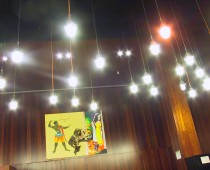Our class at Columbia on venturing continues (tiny.cc/venturing). Week 3 was about what makes a startup ecosystem — what are all the parts in a startup environment.
The lecture notes are at the link.
I discovered this time around that the class is about four things — structure, facts, stories and skills.
The structure is a map of all the parts in an ecosystem. You need money: what forms does it come in and which are appropriate for various stages? You need types of people, relevant experts; you need to be near the opportunity area. And so forth.
The facts are the names of players in the structure so you can quickly understand and navigate. It actually does help to just show people companies that are on the move and investors who are known — the top ten lists and stuff.
And the stories are there to illustrate how the facts fall into patterns. “I met a guy in college who connected me to this other company etc.” Many business classes are all anecdote and anecdote is indeed helpful. It’s also interesting.
The last piece is how to navigate the people in an ecosystem. Understanding varying interests, how to introduce yourself, how explore a market by investigating different alliances. That part is the activity we do in class and outside in the project groups.
And for that reason we make it an aim of the class that folks end up with lots of contacts as part of their alumni cohort.
Week 2 —
amol.sarva.co/class-2-of-venturing-2017-what-i-learned/
